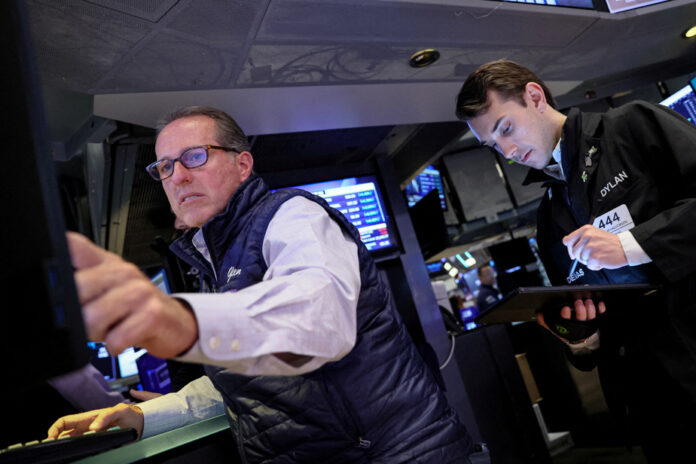(New York) The New York Stock Exchange ended in mixed order on Wednesday, digesting the Fed’s decision to leave rates unchanged while considering further hikes in the cost of credit this year.
The Dow Jones index lost 0.68% to 33,979.33 points while the tech-heavy NASDAQ advanced 0.39% to 13,626.48 points and the broader S
The US central bank (Fed) left its key rate unchanged at 5.00% to 5.25%, to give itself time “to assess […] the implications of monetary policy”, explained the monetary institution in its press release.
But “virtually all participants see it as likely that further rate hikes will be needed this year to bring inflation down to 2%,” said Fed Chairman Jerome Powell, referring, however, to “a moderate pace “.
Initially, stock indices turned red, with the Dow Jones losing as much as 1.18% and the NASDAQ 0.60%, but this reaction was short-lived.
Similarly on the bond market, yields on two-year Treasury bills, the most sensitive to short rates, first climbed to 4.75% and then stabilized at 4.70% against 4.66% last year. day before. Those at ten years remained stable at 3.79%.
“Of course, the Fed has taken a hawkish tone. But it will depend on the data, so if inflation continues to moderate, I think there is a chance that the Fed will end its restrictive monetary policy,” said Peter Cardillo of Spartan Capital Securities interviewed by AFP.
“In my opinion, it’s more a matter of either just one more upside or no upside at all and I believe that’s what the market thinks,” the analyst added.
For Ian Shepherdson of Pantheon Macroeconomics, “two more hikes this year seems excessive and unlikely.”
“By September, we think the case for further hikes will have weakened significantly, so a hike in July will be the last,” he said.
The good news of the day was the producer price index which fell in May by 0.3% compared to April, more than expected. These wholesale prices rose only 1.1% year-on-year, an additional positive signal for the Fed.
On the stock side, the Dow Jones was weighed down throughout the session by the poor performance of health insurance giant UnitedHealth Group (-6.40%) which indicated that its costs would increase because more elderly patients were scheduled. surgeries, delayed during the pandemic.
The decline of the largest market capitalization in the health insurance sector led to the fall of several other players such as CVS pharmacies (-7.76%) or Humana (-11.24%), another company of health insurance.
On NASDAQ, AMD gained 2.25% as the semiconductor maker, determined to compete with Nvidia in the artificial intelligence market, was praised by investors for presenting a “super chip”.
Graphics card specialist Nvidia, which far exceeded the $1 trillion mark in capitalization the day before, climbed another 4.81% to $429.97.
The very volatile GameStop stock, which had soared almost 11% the day before as its new president Ryan Cohen acquired $10 million worth of titles from video game stores, shed 4.64%.
Strength in industrials and metals stocks helped the Toronto Stock Exchange close higher on Wednesday, despite weakness in the energy group, while major U.S. indexes ended in disarray after the Federal Reserve announced that it was maintaining its key rate.
The composite index S
In the currency market, the Canadian dollar traded at an average rate of 75.20 US cents, up from 75.13 US cents on Tuesday.
On the New York Commodity Exchange, crude oil prices fell US$1.15 to US$68.27 a barrel, while natural gas rose less than US$1 cent to US$2.34. US$ per million BTUs.
The price of gold rose US$10.30 to US$1968.90 per ounce and that of copper rose US4 cents to US$3.87 per pound.















